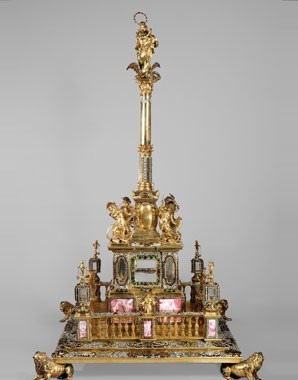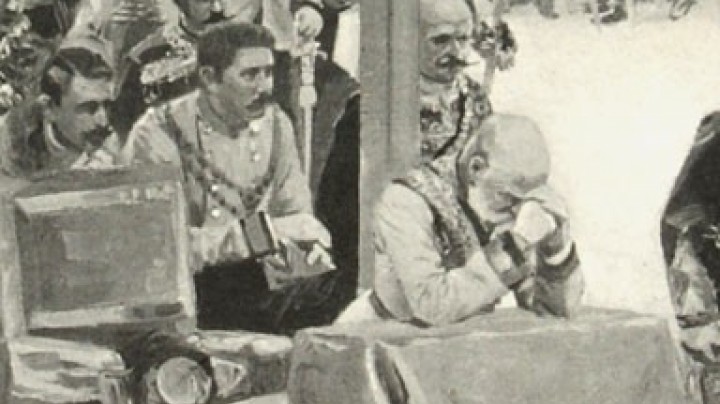In humility: the foot-washing ceremony
Every year on Holy Thursday the imperial couple knelt before a group of elderly women and men to wash their feet in a symbolic act that was intended as a visual demonstration of the Habsburg rulers’ humility.
Holy or Maundy Thursday is a festival in Holy Week commemorating the Last Supper, when Jesus washed the feet of his disciples as a sign of his humility. Foot-washing was an expression of hospitality at that time and was performed by the lowest household servants. The performance of this act by Jesus teaches the significance of humble service to all mankind:
The kings of the Gentiles exercise lordship over them; … But ye shall not be so; but he that is greatest among you, let him be as the younger; and he that is chief, as he that doth serve …. (Luke 22:25-26)
This ritual, also known as the pedilavium, is still practised in the Catholic Church in commemoration. The traditional washing of the feet of twelve men by the Pope on Holy Thursday marks the commencement of the Easter solemnities.
For the rulers of the House of Habsburg, the Washing of Feet was a demonstration of their humility before God and of Christian charity, part of the canon of a sovereign’s virtues. The ritual was practised until the end of Habsburg rule. Pictorial records of this ceremony have been preserved from Emperor Franz Joseph’s time.
Twelve poor men and twelve poor women were chosen, medically examined and then thoroughly cleansed and dressed uniformly in black. The annual directory for 1880 gives the ages of the participants that year as ranging from 88 to 92. The ceremony involved a procession to church and a public banquet with four courses. However, the food was not eaten in situ, but given to the participants in a painted wooden tub to take home. Only then did the actual washing of the feet take place. The emperor and empress knelt down, and, moving from one person to the next, washed their feet, dried them, assisted by a prelate, who held a basin for them, and another cleric, who refilled it with water. Finally each of the twelve aged people received a white leather pouch containing 30 silver coins together with wine jugs and beakers of green stoneware, before being driven home in a court carriage.
During the last years of his life Franz Joseph rarely performed the ceremony because of his failing health. To prevent the ritual falling into oblivion, each year a number of needy people were chosen and given symbolic gifts of money.

















